Around town
Hajar Mountains In UAE – How To Reach, Facts, Tips, And More
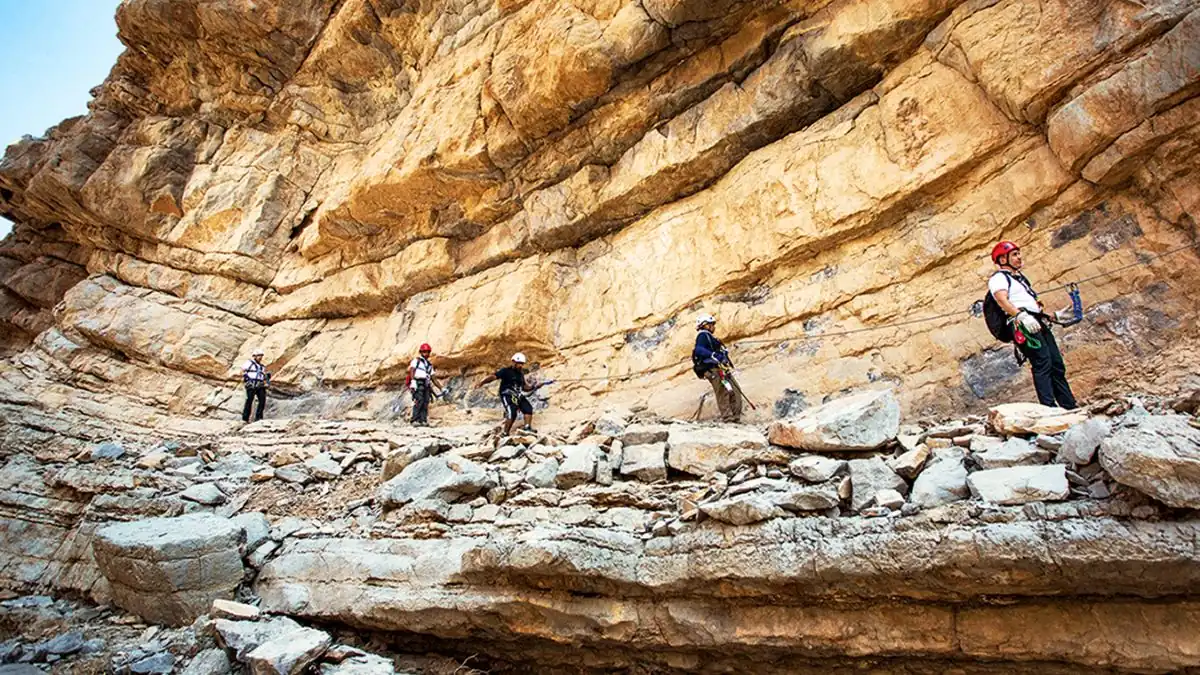
Al Hajar’s name alone conjures up an outstanding picture of a mountain. In essence, it is a blend of 2 Arabic words: Al, which means “the,” and Hajar, which means “rock” or “stone.” Together, they signify “the rock” or “the stone.”
One of the most breathtaking places on the Arabian Peninsula is the Hajar Mountain range, situated in the eastern part of the United Arab Emirates and the northeastern section of Oman. It is the highest peak range in the area and stretches 700 kilometers across the two nations. Other names for the mountain range include the Oman Mountains, Al Hajar Mountains Oman, Hajar Mountains, and just Hajar.
The Hajar Mountains are thought to have originated from a continental collision that took place at least 30 millennia ago on the Arabian-Eurasian boundary of convergent plates. It is still entirely unclear when these mountains began to form.
Geography Of Hajar Mountains
Hazar Mountains are separated into several regions geographically.
- North-Western Hazar
- Central Hazar
- Eastern Hazar and
- Western Hazar
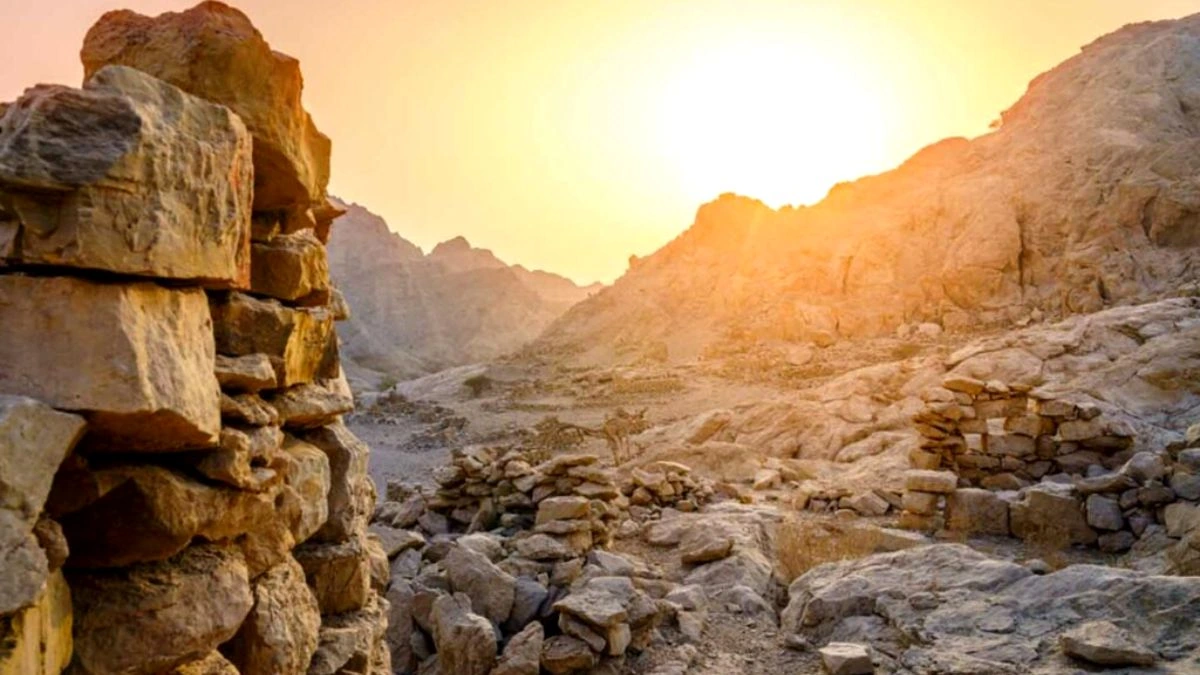
North-Western Hazar: The world’s longest zip line, Jebel Jais, is located in North-Western Hazar and is about 1934 meters vertically, according to Guinness World Records.
Central Hazar: The largest area of all is covered by Central Hazar. The terrain varies in elevation from highest to lowest (Jebel Shams to Jebel Akhdar, respectively). Jebel Nakhl connects Muscat to the eastern low Samail valley.
Eastern Hazar: It is also known as Al Hazar Ash-Sharqi, and is located on the eastern side of Samail, which leads to the fishing town of Sur in northern Oman.
Western Hazar: The mountains that makeup Musandam and the UAE are known as Western Hazar or Oman Proper because they are located west of the valley.
The four rock strata are made up of
- Carbonates, which are base rocks
- Carbonates from the continental shelf
- The term “NAPPES” refers to misplaced rocks.
- Terrestrial and marine sedimentary rocks.
Other locations include Jebel Hafeet, the Hatta Mountains, and Wadis.
The Hatta dam and the Wadi Hatta Hub, which offer horseback riding and kayaking, make Wadi Hatta famous. The hiking routes and wadis Jebel Hafeet and Hatta noted for their fauna, pools, etc., are increasingly well-known.
Geology Of Hajar Mountains
Lithology
There are four main tectonostratigraphic groups that Hajar’s geology may be divided into. Pre-Permian basement rocks comprising classics, carbonates, and evaporites comprise group one. Group two consists of an unconformably deposited succession of continental shelves from the middle Permian to the Late Cretaceous.
Group three consists of several nappes (allochthonous rocks) that were moved horizontally for more than from the northeast to the southwest.
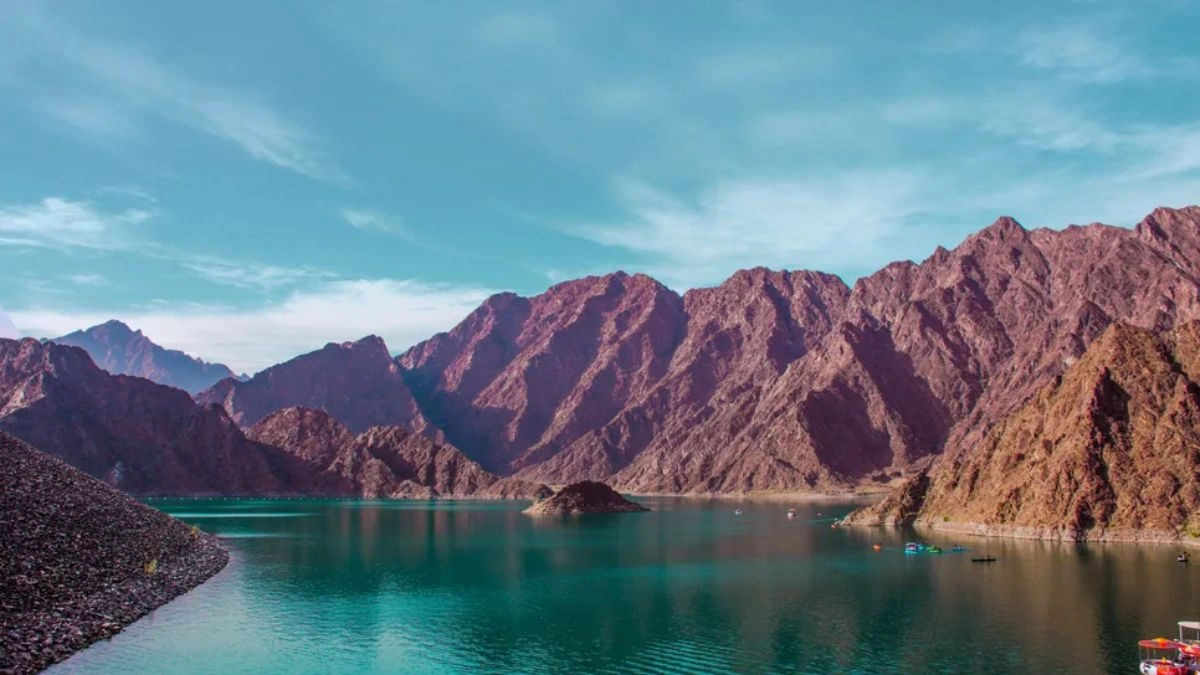
During the late Cretaceous, this significant tectonic event took place. Obduction is the name given to the process by which Semail ophiolite, late Cretaceous oceanic crust, and Permian to middle Cretaceous regional slope-rise sedimentary rocks were shoved (abducted) above rocks from groupings one and two.
Last but not least, group four consists of shallow marine and terrestrial sedimentary rocks from the late Cretaceous to the Miocene deposited on top of the three preceding groups.
Structures
The high topography is located in two significant culminations, the large-scale anticlines Jabal Akhdar and Saih Hatat. Eclogite can be found near As Sifah in the northeast of the Saih Hatat culmination. These rocks were resurrected to the surface after being subducted into the mantle for around 80 km (50 mi).
The consensus is these eclogites were initially simple volcanic rocks inside the Arabian Plate’s continental crust. A NE-dipping subduction zone then lowered this leading edge. Nonetheless, some geologists believe these eclogites are subducted through a subduction zone that dips southwest.
Flora and Fauna
The Al Hajar Mountains are also home to various plants and animals. Apricots, pomegranate, olive, and fig trees are all widely grown. Medium-sized wild cats, commonly known as Arabian Caracals, can occasionally be seen in terms of flora.
The Al-Hajar ecoregion, which includes the highest elevations in eastern Arabia’s greatest mountain range, is home to diverse flora and wildlife and offers breathtaking views. Inside the range is Jebel Shams, the highest peak in Oman, which offers views of Wadi Ghul, also known as the “Grand Canyon of Arabia”, from its summit. Indigenous species like the Omani carpet viper and Jayakar’s lizard can be discovered here.
Hopbush, six weeks threeawn, buffelgrass, and camel grass are some of the shrub and herbaceous species that surround the woodlands.
Flowering plants like Egyptian sage and Helichrysum glumaceous stand out against the rocky backdrop. The endemic and threatened Arabian tahr, which lives in the mountains as one of their few remaining strongholds, coexists with wolves, striped hyenas, Sundevall’s Jird, and the imperiled Arabian gazelle on the steep slopes.
Reptiles endemic to the area include the Omani carpet viper, Jayakar’s lizard, blue-tailed lizard, and Pristurus Gallagher gecko. As well as having a sizable breeding colony of long-billed pipits, Jebel Shams is also home to redstarts and scrub warblers, which are occasionally seen near the summits.
Competition from vast numbers of feral goats that graze widely and carelessly on plants threatens the native tahr. A booming tourism sector is anticipated to harm the delicate ecosystems further. The considerable loss in juniper communities in Jebel al Akhdar was formerly attributed to human meddling, overgrazing, and intensive soil extraction; however, climate change is now regarded as the primary driver that magnifies the effects of these contributing variables.
These juniper woodlands are in extremely bad condition, with almost no regrowth at lower altitudes, and are already near the warmer, drier end of their climate tolerance.
There is sadly little habitat available to support a further northward range shift because they live on the highest peaks in the area.
Hiking and Outdoor Activities in the Hajar Mountains
The Al Hajar Mountains are breathtaking. It is among the Middle East’s greatest natural wonders. There are many things to do, particularly if you are daring.
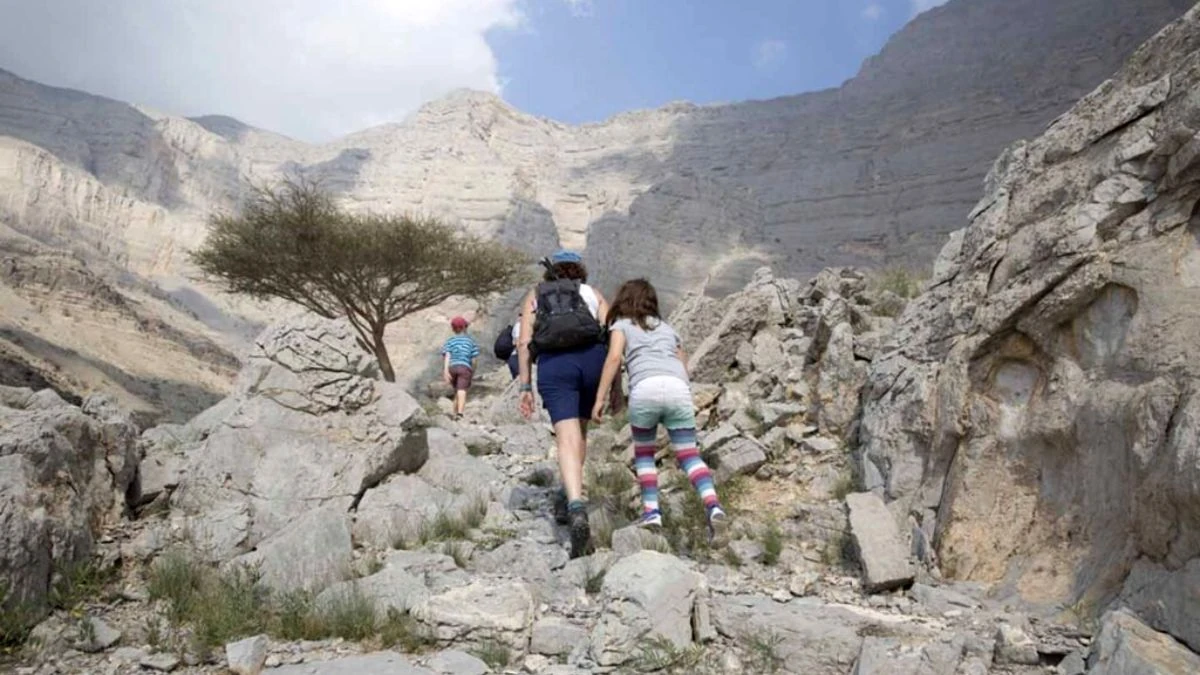
Trekking
The Hajar Mountains provide a variety of trekking routes, from brief 2-hour strolls to strenuous 10-hour excursions. Several routes have been around for generations and are based on old donkey tracks. The W6 (Abandoned Village Walk) and W18b trails are two of the most well-liked (and straightforward) routes (Village Walk).
The ideal months for trekking are often from October to April, while the season generally lasts from September to May. At elevations higher than 1900 m, trekking is possible all year long.
Rock climbing
These mountains have several great places for climbing. While numerous paths are still unmapped, well-known sites include Wadi Bani Awf and the stunning 7 Jebel Misht.
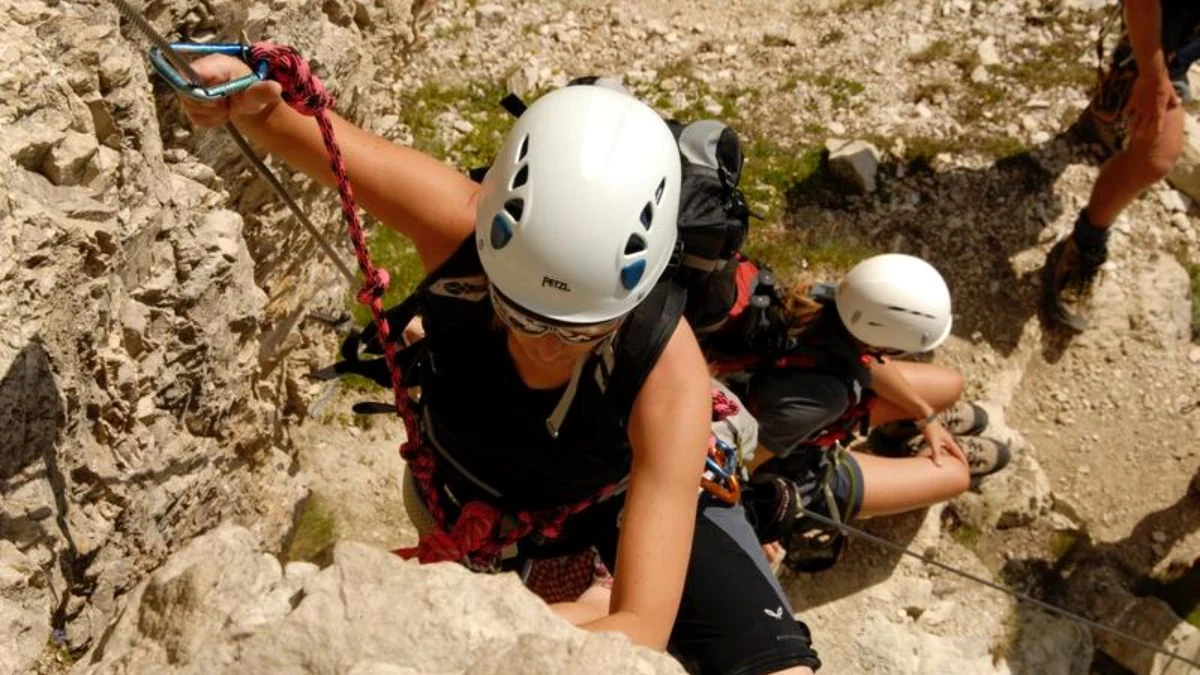
Climbers ought to be aware that Oman lacks a mountain rescue service and that, especially in distant places, they may have to wait a long time for assistance in a medical emergency.
At the Alila al Jabal al Akhdar Hotel, two via ferrata paths were available: a quick and simple one and one that took around four hours.
Hajar Mountains camping
Camping enthusiasts frequently choose the Al Hajar Mountains because of the stunning surroundings and fascinating sights.
If you want a better camping experience, purchase your camping supplies and gear. Choose your location, prepare your food to be cooked in the mountain, and while you’re there, enjoy the stars. A wonderful opportunity to relax at your speed and get away from the bustle of the city.
Historical and Cultural Sites
History enthusiasts can view the numerous historical places in Hazar, such as archaeological site ruins. In addition to a Temple, there is a Mosque called Masjid Saad Ben Moaz.
Archaeological Sites of Bat, Al-Khutm, and Al-Ayn. Three locations with beehive tombs and prehistoric towns from the third millennium BCE are all listed as UNESCO World Heritage sites.
Bat
This location was excavated in 1976 and contains beehive tombs, tower fort remnants, and communal graves.
Al-Khutm
A 20 m-diameter stone tower’s ruins can be found here.
Al Ayn (Al Ain)
With the spectacular background of Jebel Misht and its 1,000-meter-high cliffs, these undiscovered beehive tombs are in far better shape than those at Bat.
Take the paved road to the left (just before the intersection) and turn right to travel 100 meters down the wadi to reach them. A walkway goes to the tombs from here.
Local Communities and Tourism
Ras Al Khaimah emirate is majestically framed by the Hajar Mountains, adding to the region’s natural splendor. The magnificent Hajar Mountains, a significant component of the emirate and one of its main tourist attractions add to its visual magnificence.
The range dips towards the sea, and its highest point faces north. Ruus Al-Jibal, which means “Heads of the Mountains,” is surrounded by a never-ending desert and rust-colored dunes.
The Hajar Mountains give a breathtaking view of the deserts from its summit and have the biggest exposure of volcanic rock from oceanic plates.
There are roughly 20 viewpoints, including the Grand Canyon of Oman, Jebel Akhdar, Jebel Sham, Jebel Hafeet, Jabreen Castle, Wadi Ghul viewpoint, Sharfat Al Alamayn viewpoint, Shams balcony walk, and Jebel Akhdar. The Royal Opera House’s collection of musical instruments is available for visitors to listen to.
Several options, including Iranian cuisine, are available for travelers looking for lodging and meals. The old hilltop settlements and islets of Fanja further pique the pilgrims’ curiosity. There are also numerous bargains available for the purchase of souvenirs.
The JA Hatta Fort Hotel, the Rixos Bab Al Bahr, and the Waldorf Astoria Ras Al Khaimah are popular accommodations close to the mountain range.
How To Reach the Hajar Mountains?
Location: Al Hajar Mountains Oman.
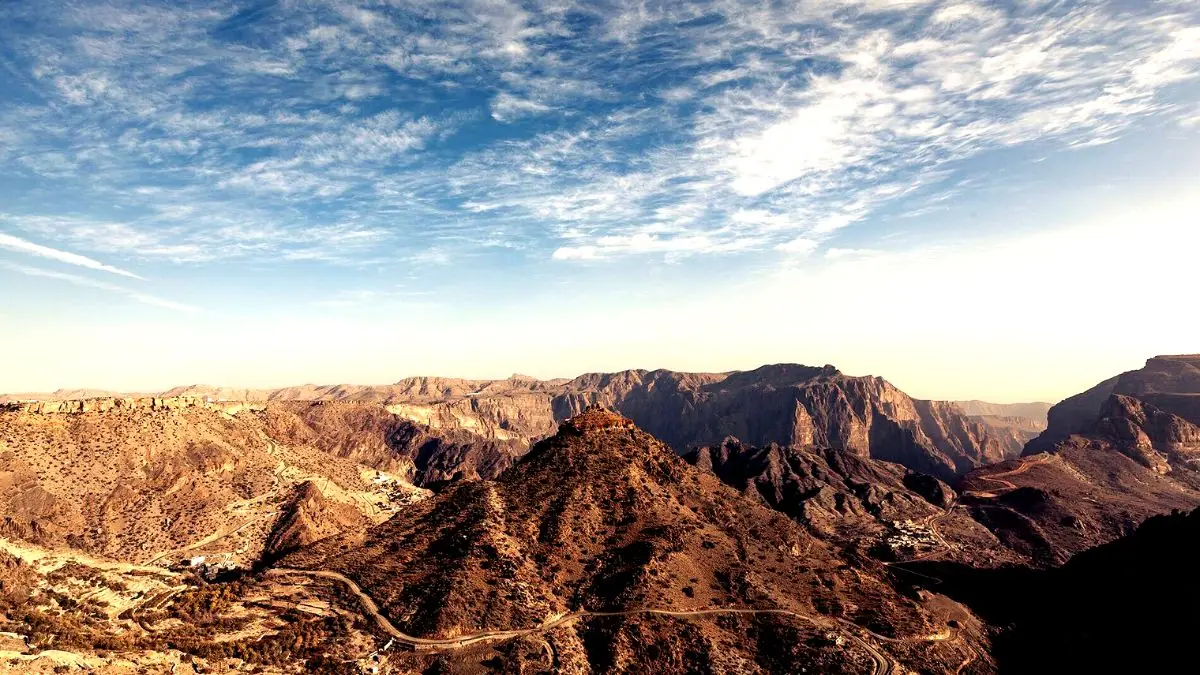
Steps to reach Al Hajar Mountains Oman
- The closest airport to the Al Hajar Mountains is Muscat International Airport (MCT).
- There are no direct public transportation choices to the mountains, so you’ll need to take a taxi from the airport.
- You can drive to the Al Hajar Mountains if that is your preferred mode of transportation. It will take you about 6 hours to get there if you’re coming from Dubai by vehicle or cab.
- When you get to the Al Hajar Mountains, you can go hiking, mountain biking, or rock climbing to explore the area. It’s crucial to pack the right tools and supplies for the activity you’ve chosen.
If you plan to stay overnight, then there are a lot of accommodations available including guesthouses, camping sites, hotels, and much more. It is advisable to make bookings in the advance, especially during the peak season.
Moreover, it is important to ensure that you respect the culture and environment. Keep the area clean, and be mindful of the local traditions and customs.
Travel Tips
- The proper organization of all the documents is crucial.
- Although the Al Hajar Mountains are in the UAE, Oman makes up most of its terrain.
- Examining the visa requirements and ensuring all passport criteria are met if one wants to travel to that area in Oman is essential.
- Remember that not many people are around the Al Hajar mountains because they are far from the city.
- Thus, bring in all necessary supplies, including food, water, and medical equipment. Although there are a few nearby communities, it is unlikely that they will get the supplies they need for trekking and camping there.
Because of the sheer experience, the spectacular excursion to the Al Hajar mountains will stay with you forever. The mountain range, a short drive from the bustle of Dubai, is a terrific place to unwind, take on physical challenges, and have fun. Plan your trip and the things you want to do, and pack effectively so you can take full advantage of the experience and not have any regrets.
Frequently Asked Questions
The Hajar Mountains are a range in Northern Oman stretching from southwest of Muscat to the United Arab Emirates along the country’s northern shore.
Around the Arabian-Eurasian convergent plate boundary, where continental collision first occurred by 30 Ma at the earliest, these mountains have formed. However, the Al Hajar Mountains’ development period is less clearly defined.
One of the most popular tourist sites in Oman is this stunning, mountainous area, and for excellent purposes.
The historic city of Nizwa is the entryway to breathtaking mountain destinations and is home to a huge souq and an opulent Grand Mosque.
Hatta is the most popular camping spot in Dubai. Hatta camping offers an unrivalled camping experience by offering a wide range of campsite amenities.
The UAE has numerous hiking routes that let you take advantage of the stunning natural scenery the nation offers. Among the top hiking routes in the Hajar Mountains are Jebel Hafeet and Hatta